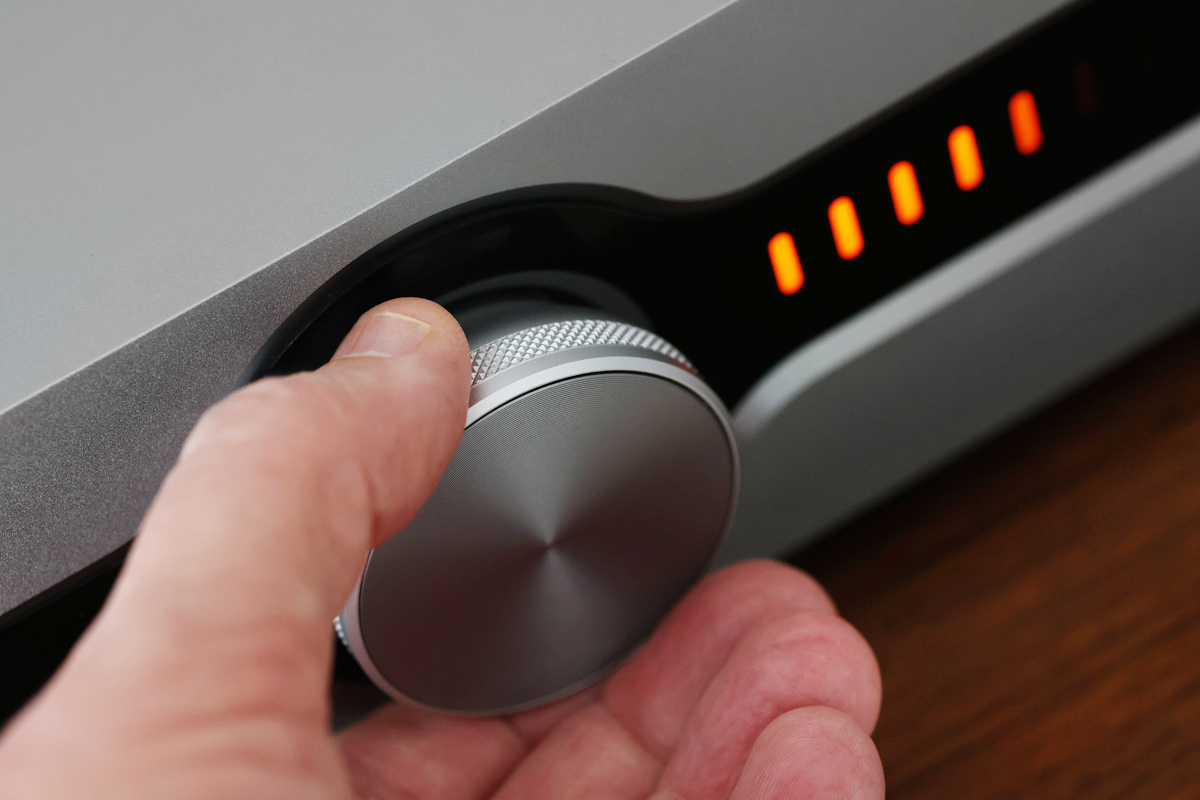Note: for the full suite of measurements from the SoundStage! Audio-Electronics Lab, click this link.
Last fall, the UK hi-fi brand Roksan updated their premium Caspian integrated amplifier. The first Caspian amplifier appeared in 1998; replacement models followed in 2004 and 2010. Roksan’s new fourth-generation Caspian lineup includes two integrated amplifiers—the Caspian 4G Integrated Amplifier ($3750, all prices in USD) and the subject of this review, the Caspian 4G Streaming Amplifier ($5000). Both models incorporate a host of Roksan’s premium analog and digital circuit designs, but the Caspian 4G Streaming Amplifier adds a network streamer based on the highly respected BluOS streaming platform from Canada’s Lenbrook Industries. Other than BluOS streaming, the two amplifiers are almost identical.
I reviewed the original Caspian integrated amplifier and matching CD player in November 1999. Back then, Roksan was known more for their Xerxes turntables, which several of our reviewers at the time—including Jason Thorpe, current senior editor of SoundStage! Ultra—used in their reference vinyl rigs. A lot can happen in a quarter century, including the recent discontinuation of the venerable Xerxes. But the various iterations of the Caspian components have remained the one constant in the company’s product range. Granted, the Caspian 4G Streaming Amplifier (which I’ll abbreviate to “Caspian 4G” in this review) bears little resemblance, either cosmetically or operationally, to the original. But it promises a fully updated design of Roksan’s finest amplifier, with new capabilities few people could have imagined 25 years ago.
Streaming into the sea
Measuring 3.7″H × 17″W × 14.9″D, the Caspian 4G is not a particularly large component, but it weighs a hefty 34 pounds. Its attractive matte-finished aluminum-alloy casework has cutouts with beveled edges on the top and bottom panels for the large left and right heatsinks. These features blend perfectly together in a smooth and purposeful appearance. Picking up the unit may elicit some back strain, and the overall construction of the amp is absolutely rock-solid. “ROKSAN | Caspian” is tastefully engraved on the thick top panel and, combined with the available black or silver finishes and overall build quality, this makes the 4G feel like a truly high-end audio component. As such, it is backed by a five-year warranty.
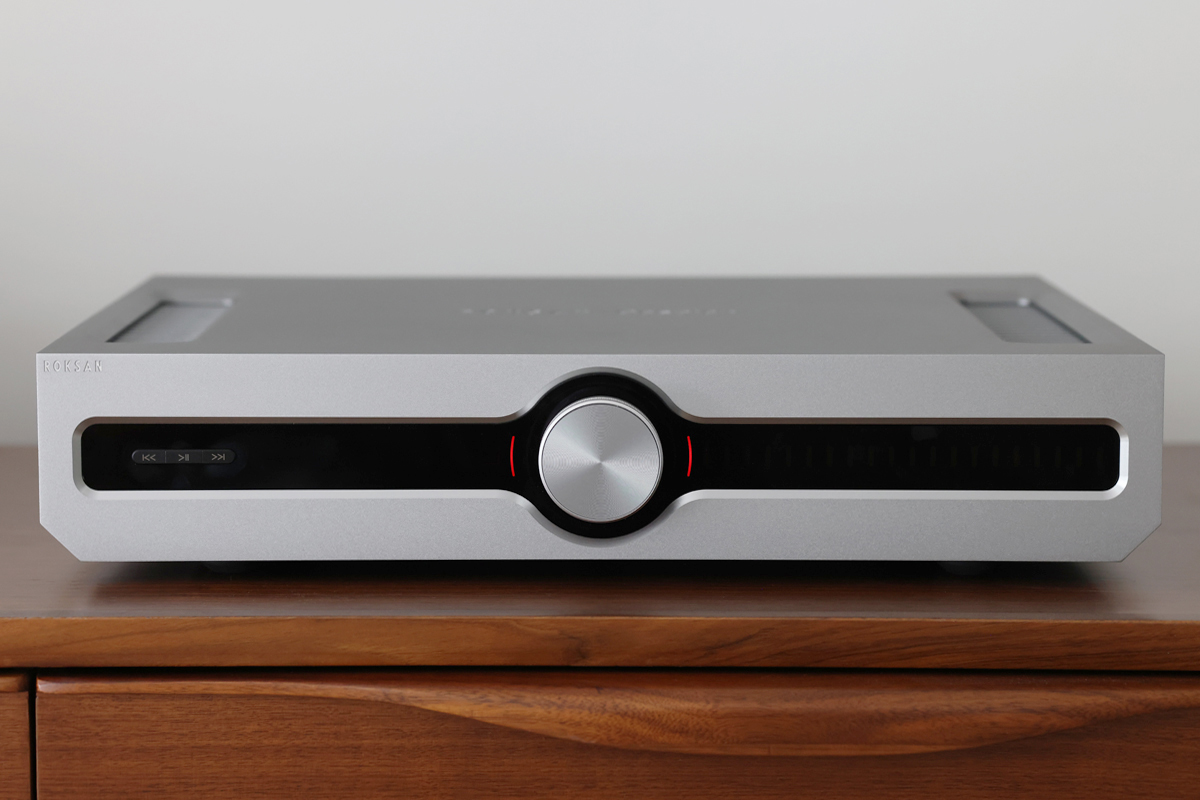
The front panel is dominated by a large central Dynamic Control Dial with haptic feedback to control volume, input selection, and power. The haptic feedback when scrolling through the inputs and the weight of the dial when adjusting the volume are reassuring, and provide a luxurious flair. The entire right side of the panel is dedicated to the volume indicator, which consists of a series of illuminated vertical bars. Another nice touch is how each individual bar has several levels of illumination to indicate volume level at an even finer scale. The left side of the panel features an OLED display that indicates the current input or shows information from the menu system, and will momentarily display the numerical value of the volume whenever it is adjusted. While the text on the display is quite small and difficult to read from a distance, the icons indicating the input and the graphic volume display are much easier to read. There is also an illuminated circle around the control dial indicating the progress of firmware updates and the elapsed time of tracks when streaming. Situated on the extreme left are the playback-control buttons.
The remote is relatively small but large enough to grip easily, has good weight, and is of stout aluminum construction. The buttons are logically arranged, with volume and track selection easily accessible near the top; buttons for power, mute, menu functions, inputs, and BluOS presets are also included.
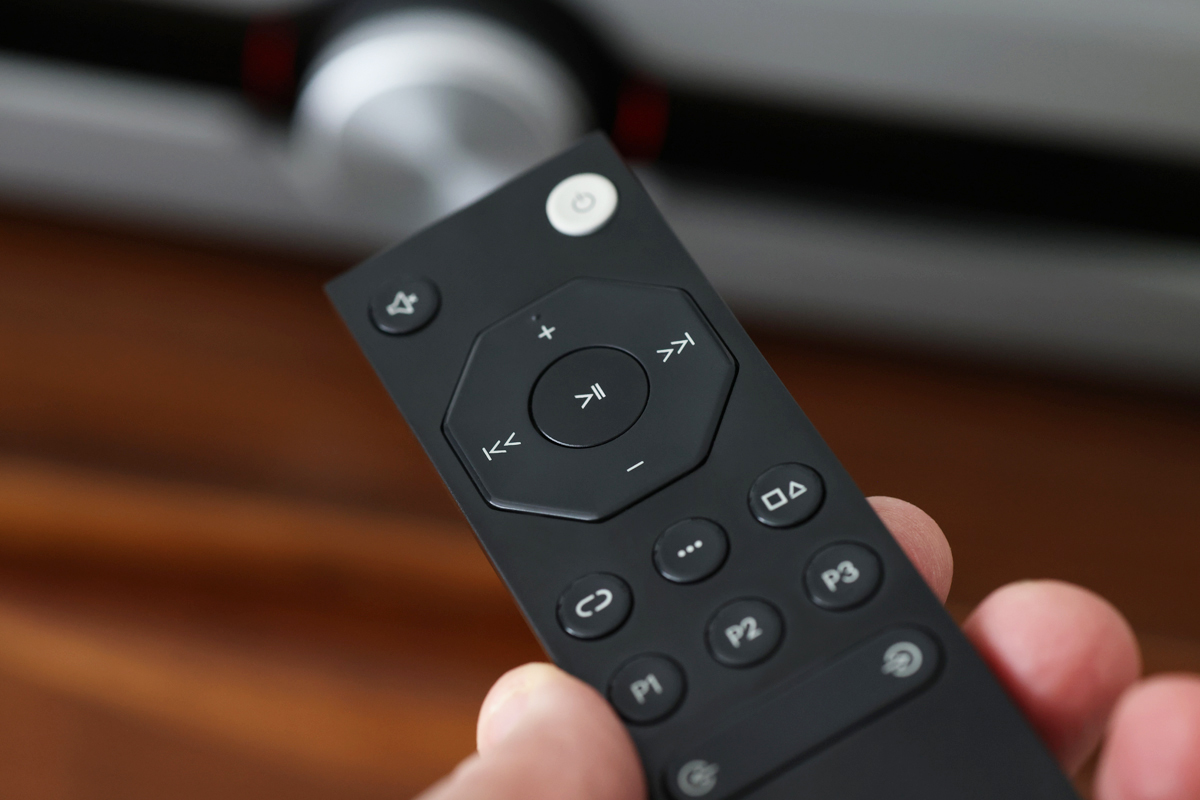
The back panel features a full set of well-laid-out inputs and outputs. High-quality speaker binding posts are located on the right and left edges, allowing heavy-gauge speaker cables to be situated away from the other inputs and outputs. On the left are analog inputs comprising a single pair of XLRs, two pairs of RCAs, and an RCA MM phono input. Below those are the phono grounding post, both XLR and RCA preamp outputs, and an RCA subwoofer output. Two 12V triggers and an IR sensor input are located in the center of the panel. Digital inputs are situated to the right and consist of two each of coaxial (RCA) and optical (TosLink) S/PDIF, HDMI eARC, Gigabit Ethernet, and USB-A for playback of audio files from storage devices using BluOS. Wireless antennas for Wi-Fi and Bluetooth are integrated into the casework. Like many BluOS-enabled components, the Caspian 4G supports Apple AirPlay 2. Supported Bluetooth codecs include SPC, AAC, and aptX. Finally, just to the inside of the left speaker binding posts is a standard IEC power inlet for the supplied power cord.
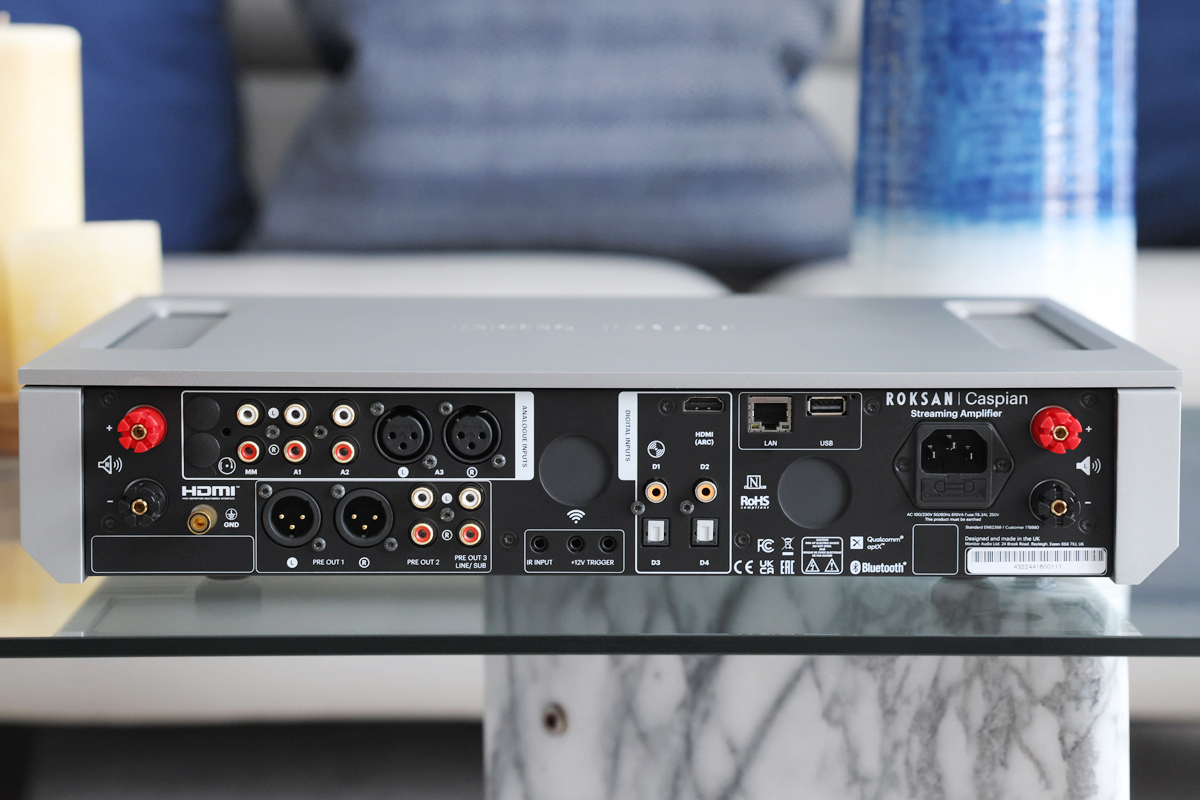
Roksan calls the class-AB amplifier architecture used in the 4G “Euphoria,” and claims an output of 105Wpc into 8 ohms (235VAC @ 1% THD, both channels driven), nearly doubling to 200Wpc into 4 ohms (235VAC @ 1% THD, both channels driven). Their intelligent power-supply architecture utilizes separate supplies for the current and voltage stages, and this is said to minimize both harmonic and intermodulation distortion across all frequencies and loads. A 600VA toroidal transformer and 36,400µF of capacitance drive six Toshiba output devices per channel, with each amplification board bolted neatly to one of the large heatsinks. Distortion is specified as <0.007% THD + N (1W @ 1kHz, both channels driven) and the signal-to-noise ratio as >85dB (1W/8 ohms, 2Vrms into input A1, both channels driven).
The fully balanced preamplification stage provides high levels of noise rejection with a ground-switching input design to minimize crosstalk between connected devices. The digitally controlled analog volume control is also a dual-mono design and separates the digital and analog sections; more commonly, these are combined into single-chip IC solutions. Each circuit board of the phono stage is individually calibrated to account for component tolerances to achieve accurate RIAA equalization. A future firmware update is planned to offer intelligent phono DSP, and will provide additional cartridge-loading profiles in addition to the generic 47k ohm / 100pF currently offered.
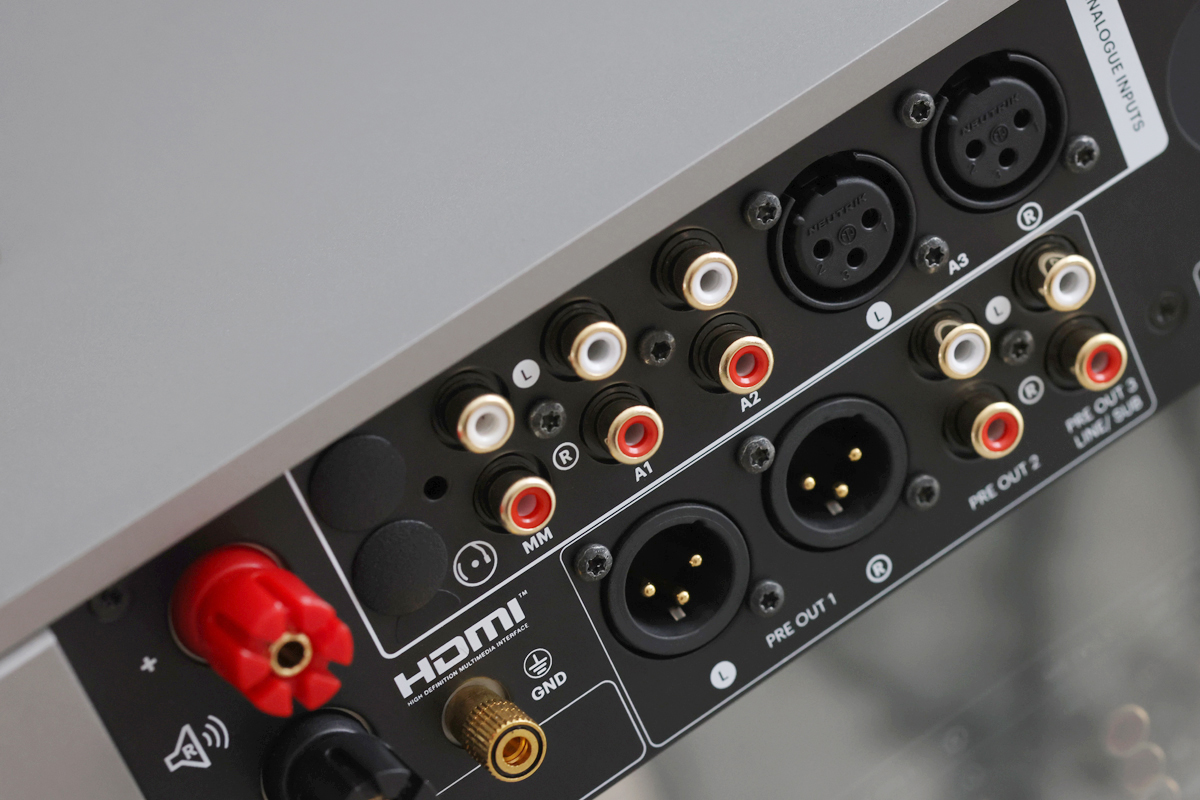
Continuing with the 4G’s dual-mono design philosophy, its Rapture DAC section features what Roksan calls a differential current-conveyor topology. Each of its two TI Burr-Brown PCM1796 DAC chips is configured in mono by summing their two channels to improve linearity. More importantly, according to Roksan, the devices provide current output with current-to-voltage conversion and subsequent analog reconstruction utilizing the current-conveyor technology of Rapture. This is said to provide superior linearity compared to digital-to-analog reconstruction using more traditional op-amp ICs. The Rapture DAC architecture supports PCM data with resolutions up to 24bit/192kHz.
The chronicles of setting up
Because I already had BluOS installed on my computer from a previous review of the NAD Masters M66 streaming preamplifier on SoundStage! Hi-Fi, getting the Caspian 4G up and running and playing music was as simple as connecting it via ethernet to my home network. After that it was recognized by BluOS and requested the specification of a few setup parameters, and then I was able to begin streaming Tidal and locally stored music files. I also re-installed the BluOS app on my Samsung S21 smartphone; again, the Caspian was immediately recognized as a player on my network.
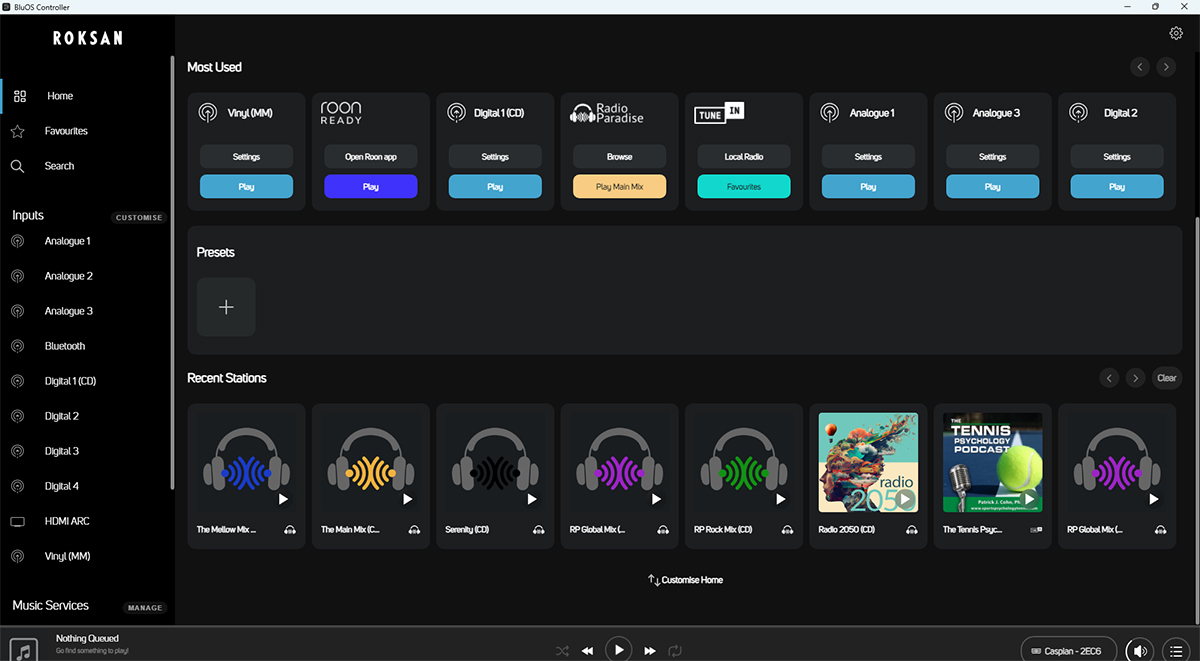
As previously described by myself and many others, BluOS is a fully featured, capable, and stable music-streaming platform. It supports PCM up to 24bit/192kHz (the maximum resolution of the Caspian 4G’s Rapture DAC), can work with over 20 music streaming services, has full MQA decoding and rendering, and offers multiroom capability when used with other BluOS products. The main limitation that audiophiles may encounter is its inability to play DSD files natively. BluOS does provide a workaround whereby DSD files can be converted to FLAC and stored in a local folder for later playback. While BluOS provides extensive streaming functionality, most of the Caspian 4G’s settings are accessed via the front-panel menu system or by using the separate MaestroUnite Android or iOS apps from Monitor Audio (Monitor acquired Roksan back in 2016).
Your experience may vary when installing the MaestroUnite app, but after pairing my phone via Bluetooth with the Caspian 4G, I could not connect to the network via Wi-Fi and find the 4G, the final step required for installation. Instead, the app returned the error, “Failed to find device.” This occurred whether I used a Samsung Galaxy S21 or an iPhone 8, and persisted after multiple factory resets and reinitializing the Bluetooth pairings. After some back-and-forth with Roksan, I deduced that the phone needed to be connected to the 2.4GHz band of my Wi-Fi network, which was only possible if I turned off the 5GHz radios of my router to force a 2.4GHz connection. After I did this, I was able to complete the installation and MaestroUnite functioned normally, even after I turned the 5GHz radios back on. Roksan later told us that this is a known issue and they are updating the manual to advise users to disable the 5GHz band on their Wi-Fi router when installing MaestroUnite.
As mentioned, you can access the system settings through the front-panel menu, but it is much easier to do so through the app’s more user-friendly interface. And granted, the router supplied by my internet provider isn’t particularly advanced or feature-laden, but it was nonetheless inconvenient to have to diagnose this issue, and it required some time and technical knowledge to resolve. Once I did have the app installed, though, its several nested menus made it intuitive to use.

MaestroUnite provides various power, standby, and trigger settings, as well as options to automatically lower the volume when first turned on, change languages, and set automatic firmware updates. Balance can be set in 1dB increments to ±3dB of center; a frequency-response tilt can be engaged from -6 to +6dB in 0.1dB increments; polarity can be inverted; phase can be set from 0 to 180 degrees in one-degree increments; and a low-latency mode is available to better synchronize BluOS zones.
The front-panel icon for each input can also be customized as well as hidden, to bypass unused inputs when scrolling through them. The sensitivity of analog inputs can be set to Low, Mid, or High, and the MM phono input has an optional rumble filter. Presumably, the additional cartridge-loading profiles will be made accessible here with the planned firmware update.
There is extensive flexibility and control provided over the line-level outputs to allow for bi-amping, addition of a subwoofer, and fixed-line output to disable volume control. After selecting subwoofer output, additional options are provided to allow for both high-pass and low-pass filters with a crossover frequency from 20Hz to 20kHz in 1Hz increments, Linkwitz-Riley or Butterworth filter types, and five slope settings from 6 to 48dB/octave.
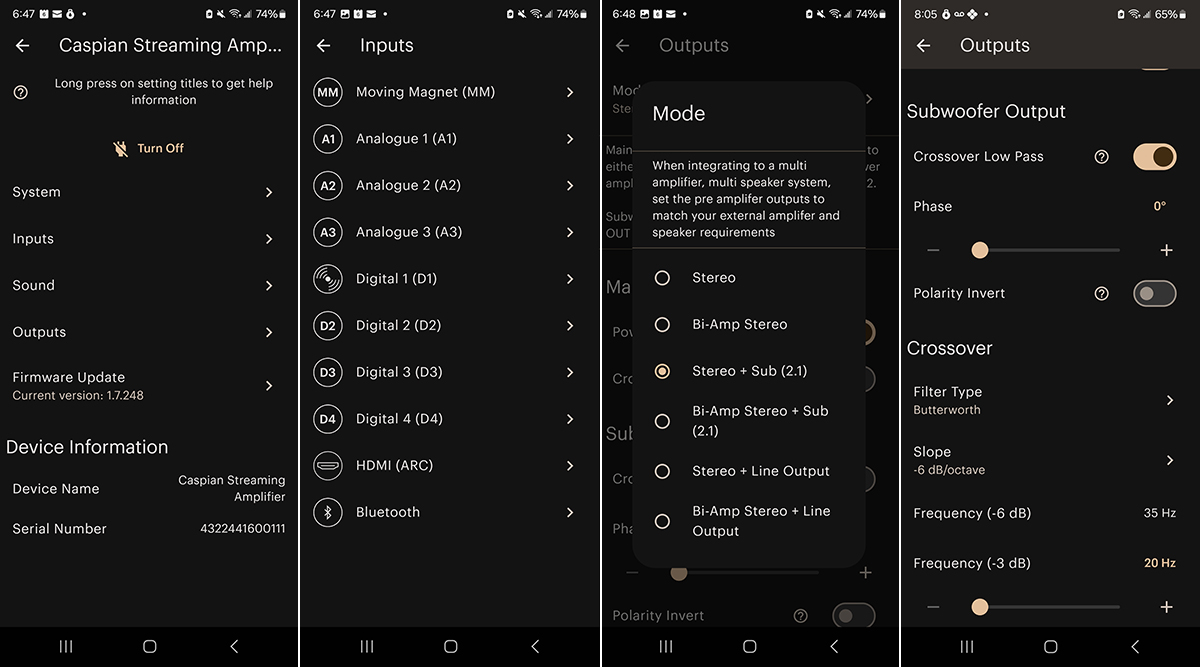
Other than using MaestroUnite to update the firmware, I left all of the settings at their factory defaults and simply connected my MartinLogan Masterpiece ESL 9 hybrid electrostatic loudspeakers to the Caspian 4G. Sources consisted of a Beelink mini PC running the BluOS and Roon applications, a Pro-Ject X1 turntable with Pick it MM cartridge, and a Samsung Galaxy S21 smartphone. Power cords and power conditioning were by ESP, Zero Surge, and Blue Circle Audio, and speaker cables were Shunyata Research Venom-X. For much of my listening, I streamed music from Tidal through BluOS, but near the end of the review period a firmware update became available that made the unit Roon Ready, so I used Roon for the remainder of my time with the 4G. Additionally, Roon provides real-time conversion of DSD to PCM, so these files did not need to be converted and stored in a file folder as they would for playback by BluOS.
Awash in a great big sea of sound
Although the MaestroUnite app required some effort to install on my system, BluOS and Roon worked as expected with the Caspian 4G, and the sound quality was very good—astonishingly good, actually. Even though it costs a cool $5000 and has rock-solid build quality, the 4G’s compact dimensions belie the quantity and quality of sound it can produce. It did tend to be ever-so-slightly darker and warmer than neutral, but it was otherwise quite transparent and had tons of power to drive the ML ESL 9s.

The faint backing vocals that begin on the second chorus of “Where Will I Be” from Emmylou Harris’s Wrecking Ball (24-bit/44.1kHz FLAC, Nonesuch Records / Tidal) are usually only barely audible, but the Roksan amp made them easily perceptible—even though they imaged directly behind the main vocals and are recorded at a relatively low level. Like a lot of Daniel Lanois–produced albums of that era, there is a lot going on in this hazy, unhurried mix. Nonetheless, the languid bass was deep and well-defined, and whether it was Harris’s nasally vibrato drawl or the gravelly tone of Neil Young’s harmonies on “Sweet Old World” and “Wrecking Ball,” all of the individual components of each track were clearly conveyed.
The amp was also able to smoothly reproduce the gentle “aah”-ing on the otherwise boisterous “Rock You Gently” from Jennifer Warnes’s The Hunter (Digitally Remastered) (24/48 FLAC, Porch Light LLC / Tidal). Not only that, but it painted a captivatingly vivid aural picture, with intertwining synth-bass notes appearing like a curtain of clouds behind the plane of my speakers and Warnes’s powerful vocals cutting through them like a shining beacon. The crisp percussion and sharp clapping popped in and out of the soundstage with lightning speed. This was the kind of control and authoritative sound I normally associate with good separates, not a diminutive integrated amp like the 4G.
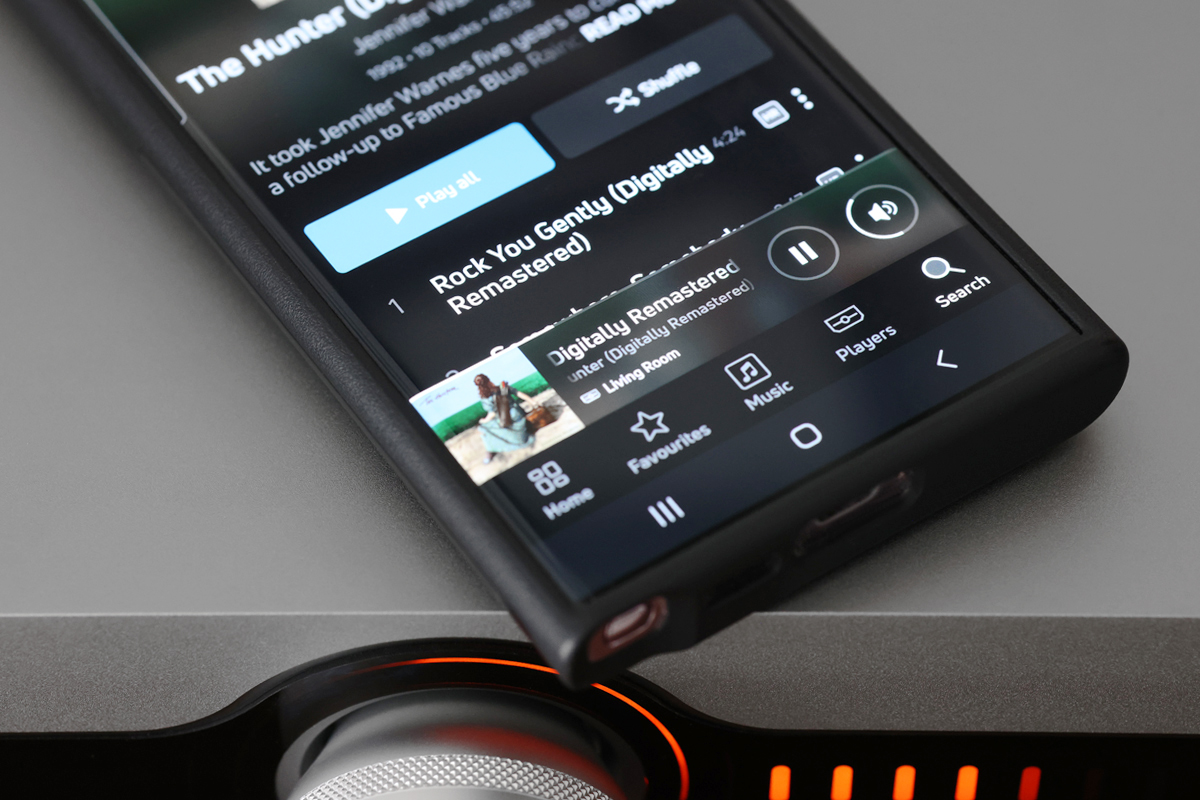
I could not have been happier with the Caspian 4G’s processing and amplification of digital signals, but the quality of its phono section was revelatory. I guess this should only be mildly surprising, considering Roksan’s long tradition in analog reproduction with the vaunted Xerxes. Listening to Friedrich Gulda’s 1975 performances of Mozart’s Piano Concertos No. 20 and 21 with the Vienna Philharmonic Orchestra conducted by Claudio Abbado (Deutsche Grammophon 486 6121), I understand now why some audiophiles might actually prefer listening to vinyl over digital—well, almost. The dynamics of this limited-edition pressing from DG’s The Original Source series were astounding. The high-quality vinyl was especially quiet in combination with the 4G and my Pro-Ject X1 ’table with Pick it MM cartridge. The orchestra sounded simply perfect, with its various sections placed discretely throughout the soundstage, just as I am used to with high-resolution digital sources—and which I did not think possible with vinyl on my system. Gulda’s fiery interpretation of the Concerto No. 21, especially his cadenza from the third movement, absolutely sparkled and bristled with energy, as each note was reproduced with fantastic gusto.
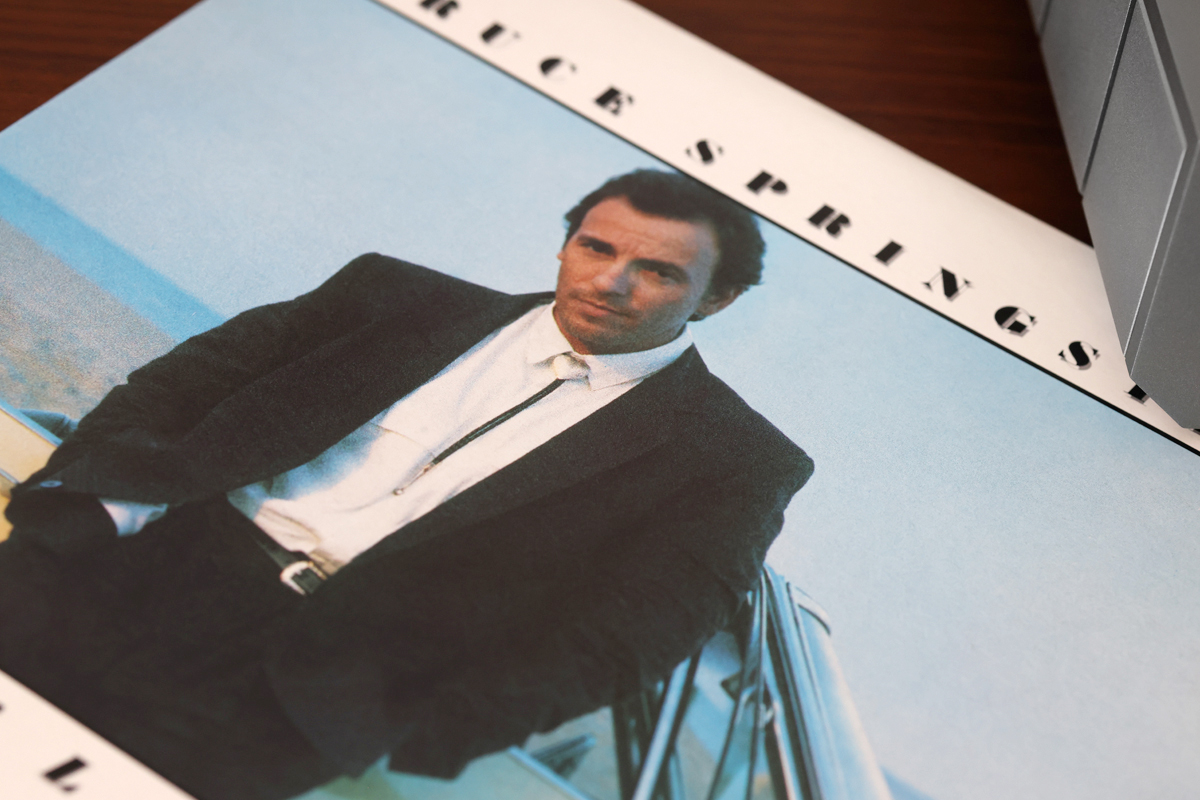
And it wasn’t just high-quality pressings that benefited from the 4G’s exceptional phono section. It gave a decent, but less-than-stellar-sounding pop record, Bruce Springsteen’s Tunnel of Love (Columbia 88985460131), a relaxed and lifelike presence. The leading and trailing edges of the many hissing “s” sounds were damped in a manner that made them seem more like Springsteen was singing in my room, rather than sounding like an artifact of a closely-miked recording. Not only did the system provide a smooth and natural presentation of the plentiful sibilance on the title track, but percussion was particularly lifelike, with bells having a genuinely raspy, metallic character and the drum kit spread widely between the speakers.
Comparison
Although it costs considerably less, Hegel Music Systems’ H120 ($3000) is my long-term reference integrated amplifier, as it offers a significant step up in performance over entry-level integrated amps in the $1K-to-$2K price range. Rated to output 75Wpc, it has a very capable built-in DAC and is Roon Ready. However, upon hooking it up to my ML ESL 9s, it was apparent that it could not keep pace with the more expensive and more powerful Caspian 4G. The Hegel performed very well with the large hybrid electrostatics, but lacked the effortlessness and sparkle of the Roksan when driving the ESL 9s above moderate volume levels.
In fact, the Roksan was closer in performance to my reference separates, the Anthem STR preamplifier ($4299.99) and Lyngdorf MXA-8400 multichannel power amplifier ($8999). Admittedly, the Roksan did sound a little opaque and looser in the low frequencies on “White Wedding (Clubland Extended Remix)” from the expanded edition of Billy Idol’s eponymous album (16/44.1 FLAC, Capitol Records / Tidal). However, there was still plenty of definition in the relentlessly undulating bass line, even if the Roksan did not quite differentiate as well between the bass and kick drum as the separates did. Perhaps more importantly, when pushed to very high volumes with the ESL 9s, the Roksan did not sound objectionable. The steely guitar strings and Idol’s growling vocals gracefully compressed, just a bit, but did not break. Compared to the much more expensive combination of separates, it held its ground admirably, even if it didn’t sound quite as smooth or as detailed; just slightly less good overall.
It’s been a minute since I had the NAD Masters M33 ($4999) in my system, but I still consider this technological tour de force of an integrated amplifier to be the one to beat in this price range. The Caspian might lack the excellent Dirac Live room correction of the NAD, but its feature set is otherwise nearly as impressive, including its use of BluOS for streaming and its Roon capability. Additionally, the NAD uses the ultra-low-distortion, high-power Eigentakt amplification technology licensed from Purifi Audio. I loved it so much that I purchased the review sample of the similar-sounding Lyngdorf MXA-8400 multichannel amplifier, which is also powered by Eigentakt modules and now resides in my reference system. That said, there’s more than one way to build an amp, and I found the Roksan’s full-bodied sound to be immensely enjoyable, and, combined with its fantastic phono stage, it gave me a new appreciation for vinyl playback.
An amplifier fit for a prince
The most current iteration of Roksan’s Caspian streaming integrated amplifier thoroughly updates this model in the company’s long-serving product line. It adds modern digital streaming functionality to wonderful-sounding, powerful class-AB amplification, all while continuing to pay homage to the company’s analog roots with an absolutely brilliant phono stage.
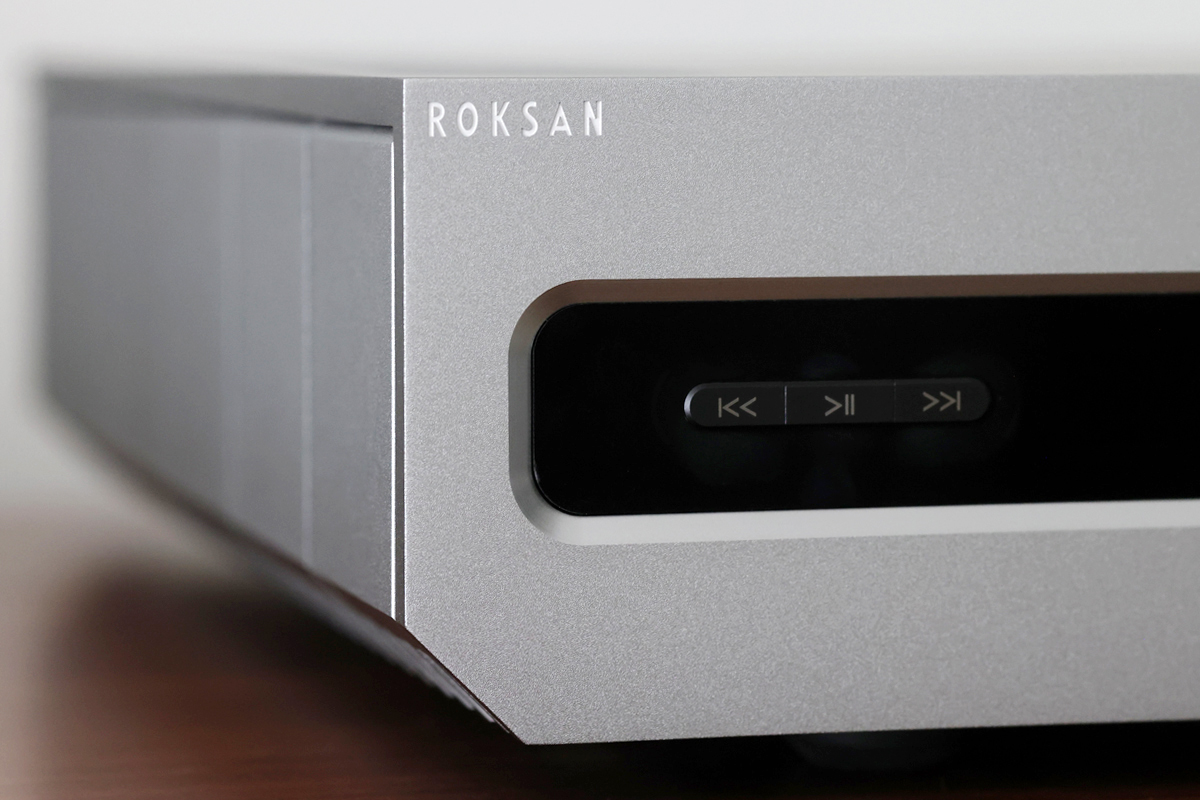
Having had some fantastic integrated amplifiers in this price range come through my system has certainly raised my expectations, so I didn’t think that I would enjoy my time with the Caspian 4G as much as I did. But whether it was exquisitely playing back vintage Mozart piano-concerto recordings or crankin’ out the Billy Idol remixes, I can honestly say I enjoyed listening to it as much as any of those other amps.
. . . Roger Kanno
Note: for the full suite of measurements from the SoundStage! Audio-Electronics Lab, click this link.
Associated Equipment
- Speakers: MartinLogan Masterpiece Classic ESL 9
- Preamplifier: Anthem STR
- Power amplifier: Lyngdorf Audio MXA-8400
- Integrated amplifier: Hegel Music Systems H120
- Digital sources and control devices: Beelink mini PC running Windows 11, BluOS, Roon, and Tidal; Samsung Galaxy S21 running MaestroUnite, BluOS, Roon, and Tidal
- Analog source: Pro-ject Audio Systems X1 turntable with Pick it MM cartridge
- Speaker cables: Shunyata Research Venom-X
- Power cords: Essential Sound Products MusicCord-Pro ES
- Power conditioners: Blue Circle Audio PLC Thingee FX-2 with X0e low-frequency filter module; Zero Surge 1MOD15WI
Roksan Caspian 4G streaming integrated amplifier
Price: $5000
Warranty: Five years, parts and labor
Roksan
24 Brook Road
Rayleigh, Essex, SS6 7XJ
United Kingdom
Phone: +44 (0) 1268 740580
Email:
Website: www.monitoraudiogroup.com
North American distributor:
Lenbrook Americas
633 Granite Court
Pickering, Ontario L1W 3K1
Canada
Phone: 1-800-263-4641
Email:
Website: www.lenbrook.com





